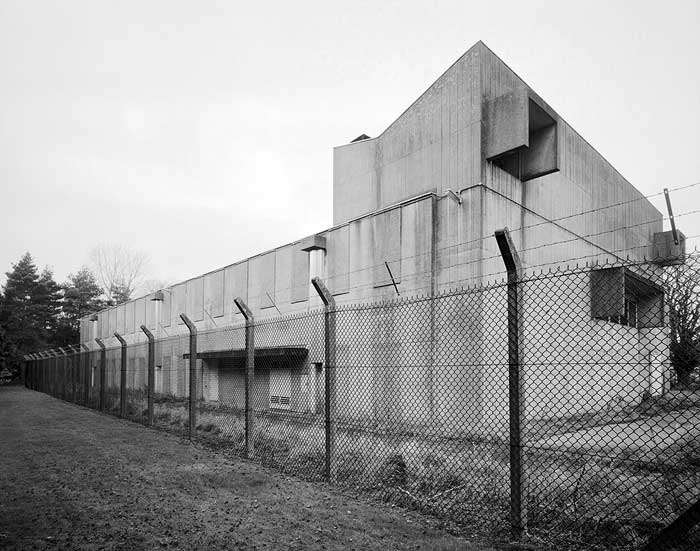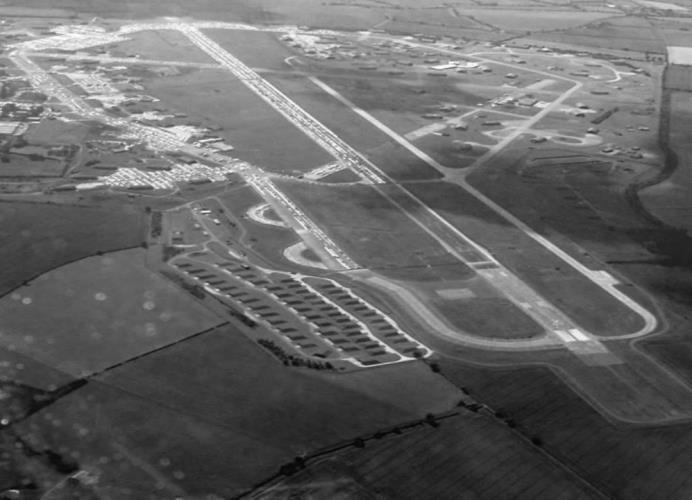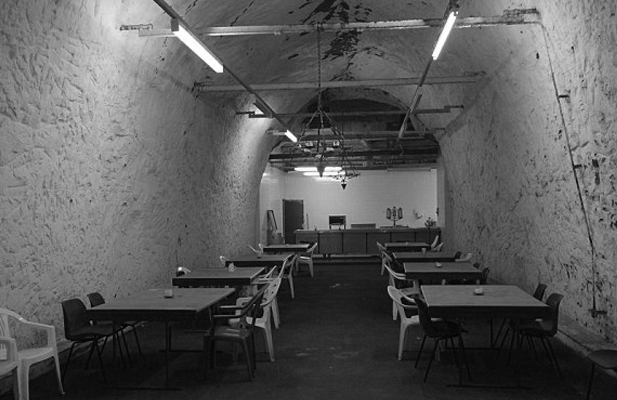The Cold War
- 17th July 2018
Last week Worcestershire Archive and Archaeology Service hosted Jack Booth, a student placement from Abbey Grange C of E Academy, Leeds. Jack, who is hoping to study Modern History at University, spent a week with the Service and as part of his experience wrote this fantastic blog exploring the changing character of Cold War infrastructure in the UK. Our Historic Environment Record has over 50,000 records ranging from the Palaeolithic (up to half a million years ago) to post war, and Cold War sites are included.
How was the infrastructure of the UK built in the post-modernist era affected by the Cold War?
The Cold War was an extremely interesting period. It spanned the majority of the second half of the 20th century, and although given the title “War”, it was effectively a competition over which superpower could scare the other without actually doing anything significant. The main threat of each nation was its nuclear strength, although throughout the tension (1947-1991), not a single weapon of mass destruction was used. Although the “war” was mainly between the USA and the USSR, each superpower’s allies, including the UK, were heavily influenced by the growing tensions, as they were disposed to come to the aid of their fellow nations if things went south. This blog will explore the changes to UK infrastructure which resulted from the Cold War and how certain characteristics were introduced as a result of the potential danger of the conflict.
A common feature of cold war infrastructure within the UK is its simplicity and functionally, with mass amounts of plain concrete being used for the main body of many structures. A good example of this is the “Regional Seat of Government”, located on Brooklands Road in Cambridge. Built in the 1960s to act as a government emergency bunker, designed to function post-nuclear attack, its exterior is made almost entirely of reinforced concrete. Despite containing intricate instruments and technology, this simple use of concrete blocks offers the building an enormous amount of protection. Furthermore, the basic exterior gives it an ordinary feel, hopefully not raising any soviet eyebrows! This design allowed the building to protect around 400 people following an attack, and it is a clear example of how designs were altered in response to the tensions overseas, as infrastructure was designed purely for function instead of aesthetics, mirroring the hard-line attitudes of the two superpowers(1). The building of these structures was physical evidence of the anxiousness of the UK government, which complemented the number of regulations the government drafted in case of war. A key example of this were regulations regarding essential supplies, works and services, which would have given the government the power to control all land and property, allowing more structures such as the Regional Seat of Government to be built.

Photograph taken 23 October 1997 © Crown copyright.NMR ref: BB98/01059
In addition to new buildings, changes were made to infrastructure, predominately military airfields, prior to and during the Cold War. This is evident at RAF Upper-Heyford, which was one of the four main American bases during the period, where the runway was modified in order to suit US long range bombers. In this case the runway was extended, and shows the extent to which the cold war had an effect on UK infrastructure as it clearly indicates the intentions of the superpowers, the USA in this case, to spread their influence and gain control/support of other nations, and this is evident by the presence of the US Air Force on UK soil. The airfield is no longer in use and is scheduled under the Ancient Monuments and Archaeological Areas Act 1979 (List Entry 1021399), therefore preserving it as a physical memory of the tensions between communism and capitalism(2).

Copyright www.raf-upper-heyford.org
Furthermore, in the area of Herefordshire and Worcestershire, there are a vast number of nuclear bunkers which were modified or built during the Cold War. Most of these underground facilities were built in the 1960s following the doctrine of Mutually Assured Destruction and the 1963 Cuban Missile Crisis which resulted in large scale retaliation in the form of producing more and developing larger nuclear weapon stockpiles. One of these is located near Kidderminster. The “Drakelow Tunnels” were built during World War 2 as an underground factory producing spare parts and covers 285,000 square feet, including over 3 miles of tunnels. During the 1960s the tunnels were adapted and became a Regional Seat of Government. There are also records of a bunker, 20 feet underground, in Broadway. The bunker is relatively small compared to Drakelow, consisting of just a main observation room and a toilet, but held an important role if there was a risk of attack. The volunteers who worked in the bunker held the job of monitoring the location of where a bomb fell, the pressure of the bomb and the amount of radiation the bomb produced(3). The introduction of these bunkers highlighted the fact that war technology produced by the two superpowers forced defensive infrastructure to adapt and go underground in order to evade attacks, resulting in a massive change in military infrastructure tactics. The bunker is closed to the public and is no longer in use by any military, but still remains one of many reminders of the infrastructure built in the Cold War.

Copyright www.hauntedhappenings.co.uk/drakelow-tunnels-ghost-hunts/
Within Worcestershire there is also a bunker that is still in use today. The bunker in Wood Norton is located in a “BBC training camp for sound engineers”. Built in secrecy in 1966 during the high tensions of the Cold War, it was designed to be ready for service in the event of an attack on London. The bunker would carry on BBC broadcasts to inform the public of events if war broke out. It is rumoured that the BBC had 100 days’ worth of broadcasts along with radio shows, religious, comedy and drama programmes and even The Sound of Music, which were kept until 1993 (4). This shows that the cold war changed infrastructure to such an extent that the same structures and buildings are used today and can still be operated effectively 50 years later.
References / Acknowledgements.
- https://historicengland.org.uk/listing/the-list/list-entry/1390525
- https://historicengland.org.uk/listing/the-list/list-entry/1021399
- http://news.bbc.co.uk/local/herefordandworcester/hi/people_and_places/history/newsid_8722000/8722006.stm
- https://www.independent.co.uk/news/media/tv-radio/the-bbc-bunker-they-dont-want-you-to-know-about-2121187.html
Post a Comment